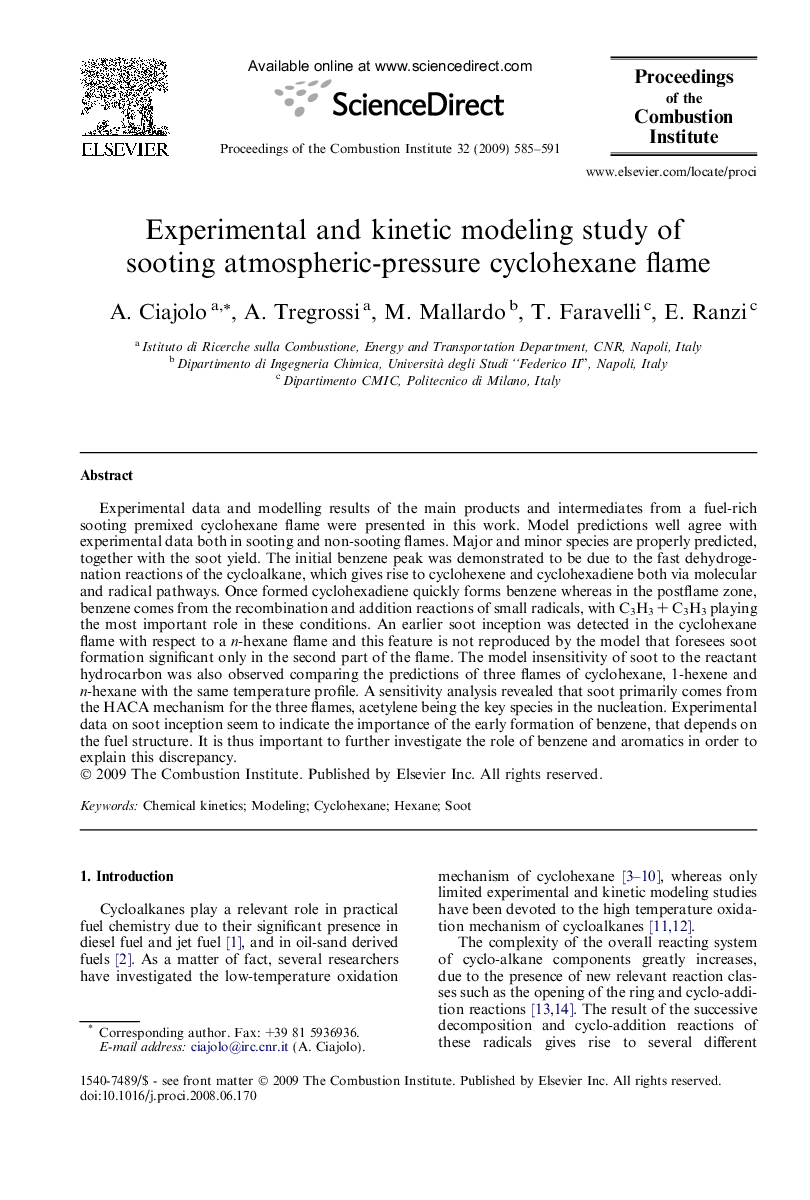| Article ID | Journal | Published Year | Pages | File Type |
|---|---|---|---|---|
| 6679452 | Proceedings of the Combustion Institute | 2009 | 7 Pages |
Abstract
Experimental data and modelling results of the main products and intermediates from a fuel-rich sooting premixed cyclohexane flame were presented in this work. Model predictions well agree with experimental data both in sooting and non-sooting flames. Major and minor species are properly predicted, together with the soot yield. The initial benzene peak was demonstrated to be due to the fast dehydrogenation reactions of the cycloalkane, which gives rise to cyclohexene and cyclohexadiene both via molecular and radical pathways. Once formed cyclohexadiene quickly forms benzene whereas in the postflame zone, benzene comes from the recombination and addition reactions of small radicals, with C3H3Â +Â C3H3 playing the most important role in these conditions. An earlier soot inception was detected in the cyclohexane flame with respect to a n-hexane flame and this feature is not reproduced by the model that foresees soot formation significant only in the second part of the flame. The model insensitivity of soot to the reactant hydrocarbon was also observed comparing the predictions of three flames of cyclohexane, 1-hexene and n-hexane with the same temperature profile. A sensitivity analysis revealed that soot primarily comes from the HACA mechanism for the three flames, acetylene being the key species in the nucleation. Experimental data on soot inception seem to indicate the importance of the early formation of benzene, that depends on the fuel structure. It is thus important to further investigate the role of benzene and aromatics in order to explain this discrepancy.
Related Topics
Physical Sciences and Engineering
Chemical Engineering
Chemical Engineering (General)
Authors
A. Ciajolo, A. Tregrossi, M. Mallardo, T. Faravelli, E. Ranzi,
